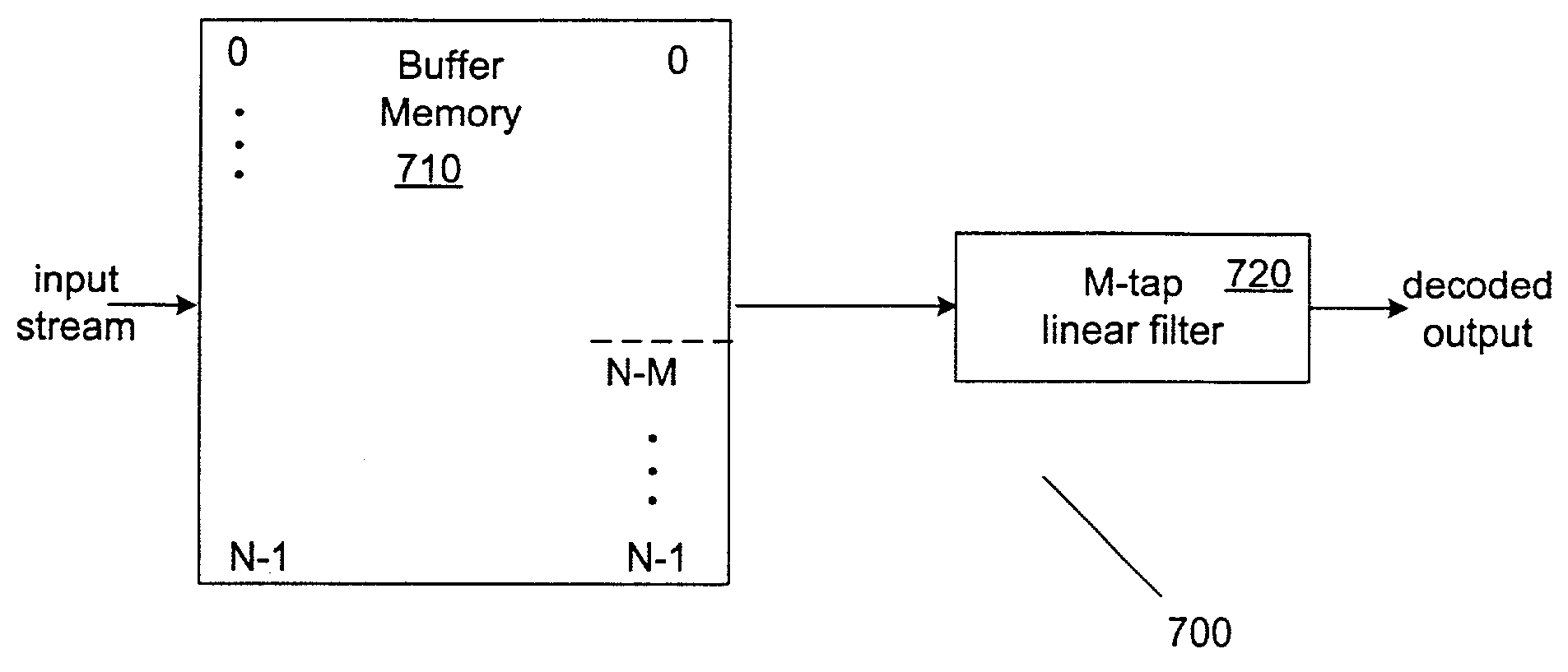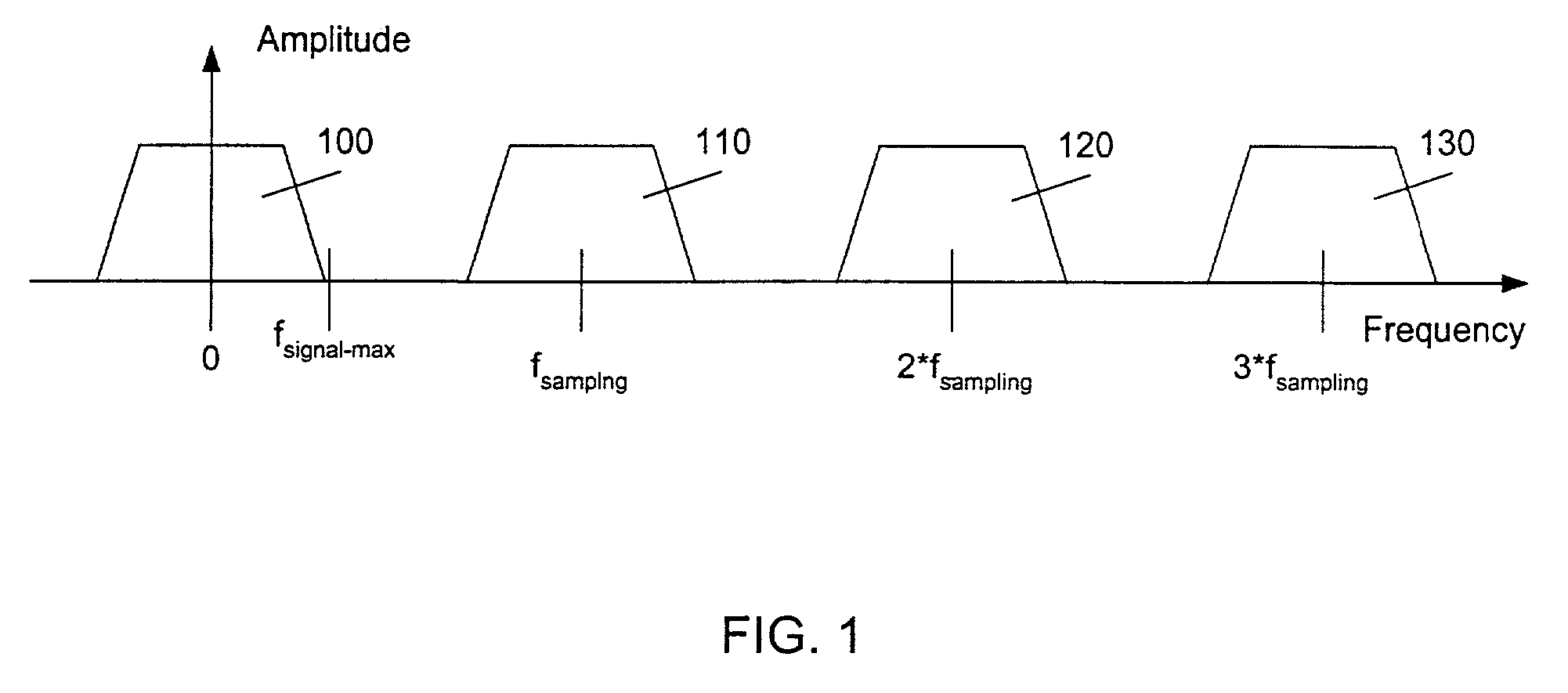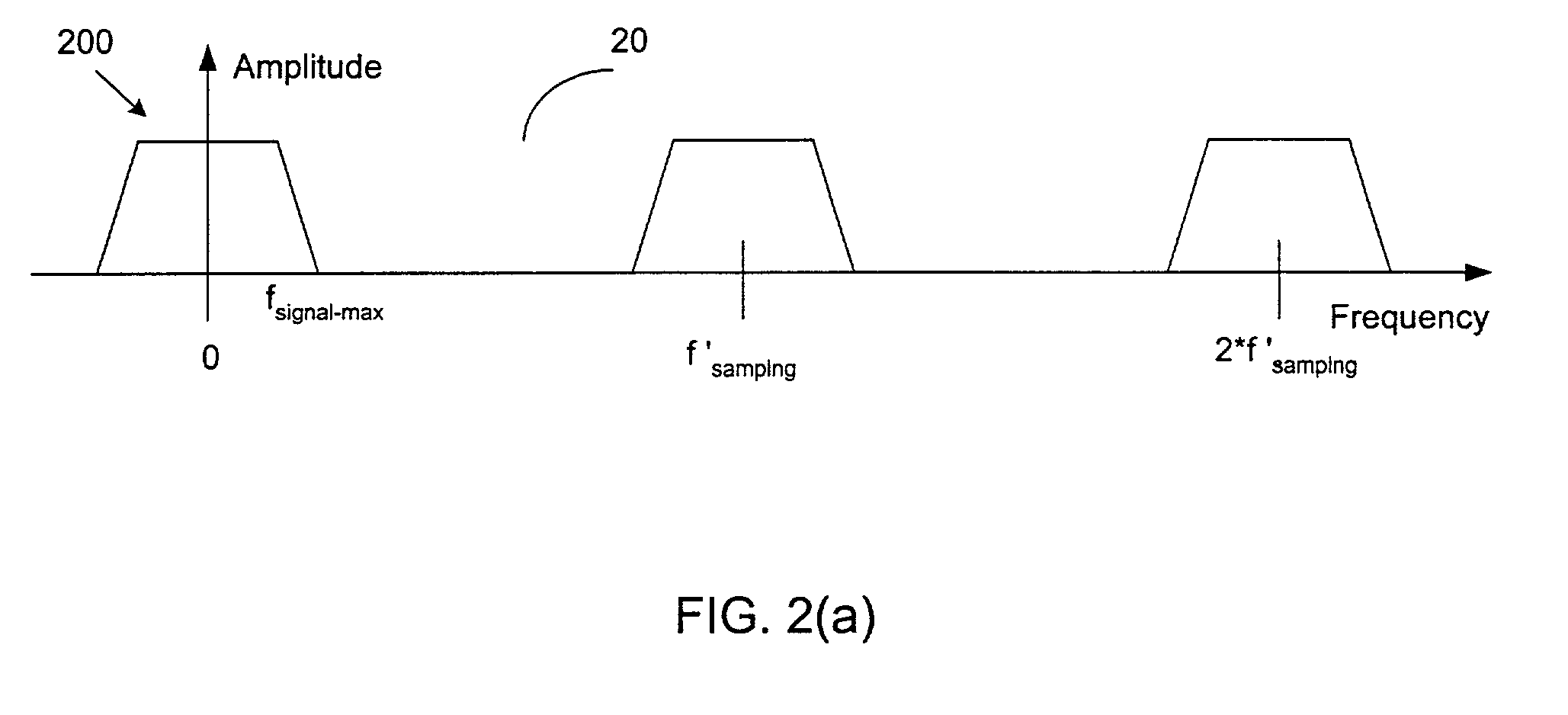Efficient methods for filtering to avoid inter-symbol interference and processing digital signals having large frequency guard bands
a filtering system and filtering technology, applied in the field of digital signal processing, can solve the problems of aliasing becoming a major issue, affecting the next symbol, and the original signal cannot be easily, if at all, and achieves the effect of reducing the size of the buffer, avoiding inter-symbol interference, and simplifying the circular filtering system
- Summary
- Abstract
- Description
- Claims
- Application Information
AI Technical Summary
Benefits of technology
Problems solved by technology
Method used
Image
Examples
Embodiment Construction
[0034]In brief, the invention consists of using circular filtering techniques to prevent ISI in digital samples that encode symbols. Such circular filters can be implemented by, in one embodiment, the use of a buffer memory that buffers all the samples of a given symbol and provides selected outputs therefrom to a linear filter. Depending on the nature and origin of the digital samples encoded, it may be possible to use a buffer memory of a smaller size (one that stored less than all the samples of the symbol at any one time) and a multiplexer to selectively provide outputs to the digital filter. In both embodiments, the selection of which samples are provided to the filter is a function of the characteristics of the filter. In another aspect of the invention, the conventional length of an FFT is increased beyond what would be ordinarily required in order to produce a larger guard band.
[0035]FIG. 7 is an overview of a circular filtering technique according to at least one embodiment...
PUM
 Login to View More
Login to View More Abstract
Description
Claims
Application Information
 Login to View More
Login to View More - R&D
- Intellectual Property
- Life Sciences
- Materials
- Tech Scout
- Unparalleled Data Quality
- Higher Quality Content
- 60% Fewer Hallucinations
Browse by: Latest US Patents, China's latest patents, Technical Efficacy Thesaurus, Application Domain, Technology Topic, Popular Technical Reports.
© 2025 PatSnap. All rights reserved.Legal|Privacy policy|Modern Slavery Act Transparency Statement|Sitemap|About US| Contact US: help@patsnap.com



